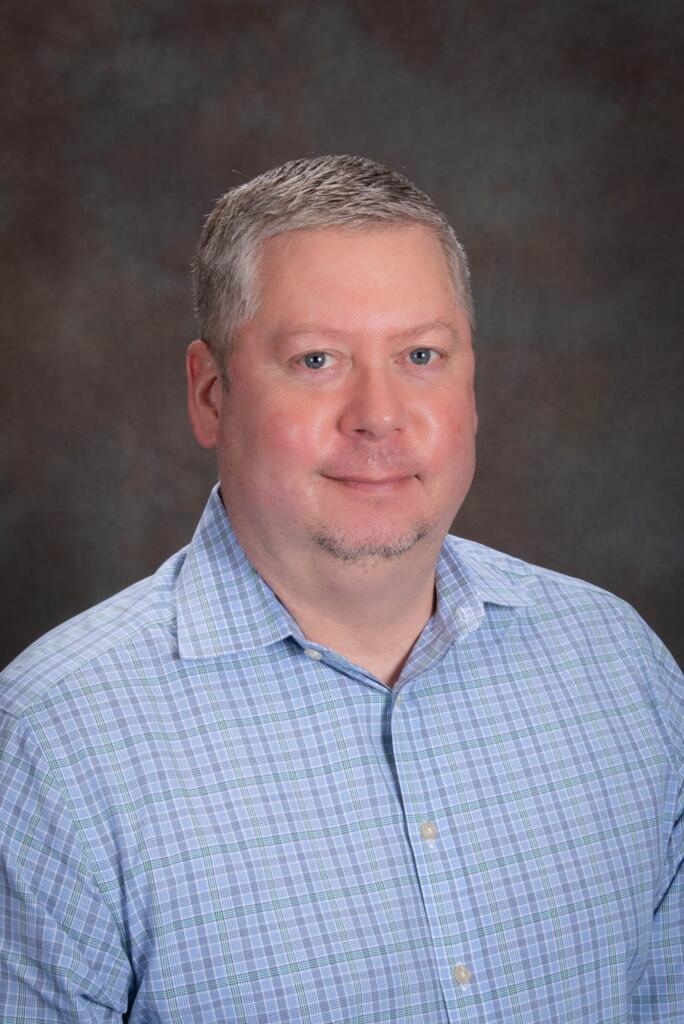Genfare employee Edward Brandis is the Business Development Director (BDD) serving clients in the Northeast US. He’s worked in transit for his entire professional career with a passion for making mobility more accessible and equitable. Read more about Ed’s background and his proudest moments as a Genfare colleague.

Introduction to the mobility industry
How did you get your start in the transit industry?
I joined the transit community in college in 1996. My technical writing professor introduced me to some folks at the MTA Long Island Bus, the transportation provider for my hometown on Long Island. What began as the creation of best practices papers led to project management and experience with all facets of the operation.
What was one of your first shining moments?
New York City Transit had a monthly news show on the public broadcast station called Transit Transit News Magazine. It featured different stories about the happenings throughout its communities. During my years at Long Island Bus, I tried out for local reporter and got the job, becoming the first Long Island reporter for the program. Through that opportunity, I was a part of one of the episodes that aired, featuring the work that we were doing on the MTA Long Island Bus.
It’s not always common for people to stay and work in the same industry for the entirety of their careers. What compelled you to remain in the transit industry?
Well, I’m a transit nerd. I love that we provide an important service to people.
The first people that I met at Long Island Bus were deeply passionate about their work. They cared about all aspects of high-quality public transportation, which includes safety, accessibility, cleanliness — you name it. I gravitated towards that energy and thought that it was great to work with a group of people like that.
What do you enjoy when you’re not being a transit nerd?
I’m always a transit nerd! But outside of work, I love barbecuing and smoking meats. I recently rediscovered fishing and enjoy doing it with my 10-year-old son. Also, my dogs and I like to head out into the forest preserve and hike on the trails.

Accessibility in transit
Let’s get back to transit. You mentioned the importance of accessibility in mobility. How has public transportation become more accessible?
Once I moved to the private sector, I worked for a technology company that produced an audible bus stop announcement system designed to help bus riders who were blind and visually impaired. In doing that, I really saw how technology can touch people’s lives and make it easier for them to get around.
In a sales capacity, I educated folks at the Chicago Transit Authority (CTA) on how to improve accessibility and stressed the importance of accurate information for those whose saftety relied upon it. Through my partnership with CTA, we eventually won a contract with the agency — an important milestone for the company and my professional career.
During my time at that company, we would also meet clients and the blind and visually impaired members of their communities to learn what works best and what doesn’t work, and refine the solutions over time.
Did you ever get to witness your work in helping those that needed it most first-hand?
Yes! There was one occasion where I was sitting in a booth at the Chicago Hilltop Diner, waiting for some coworkers, and there was a group of visually impaired people sitting in the booth behind me. They didn’t know I could hear them, but they were talking about the bus stop announcement system. They mentioned how they felt more comfortable on the bus, knowing they wouldn’t miss their stop, and how they’d take the bus more often now that the system was in place. It was touching and one of the bigger moments where I thought, “Yeah, I’m doing the right thing.”
Ed’s career at Genfare
That’s a powerful moment. It sounds like your passion lies in making transit more accessible and equitable – is equitable mobility what drew you to Genfare?
I was looking at what Genfare does and saw a chance to make public transit more accessible financially – our solutions, whether cash or cashless, are designed to make transit equitable and affordable to all. Features like fare-capping and open payment allow riders who are limited to or prefer to pay for one ride at a time to receive the same price advantages as those who can more easily afford discounted products, such as monthly passes.
At Genfare, we work hard and thoughtfully to serve those who need public transportation the most and that’s something that I can get behind.
What’s been your proudest moment as a Genfare colleague thus far?
I am particularly proud when transit agencies are empowered to leverage our technology in creative ways. For example, the Capital District Transit Authority (CDTA) has implemented over 30 Retail Point of Sales (RPOS) systems at schools, supermarkets, and check cashing businesses. That can help make public transit more equitable and available to their riders by meeting them where they are, such as allowing them to digitize cash, and making their journeys even easier.
What I enjoy most about working at Genfare is that our solutions truly make transit more equitable. If one rider is better able to ride the bus because of our work, we win.
Genfare is committed to helping your agency adapt to the needs of the future. Contact us today to find out how.